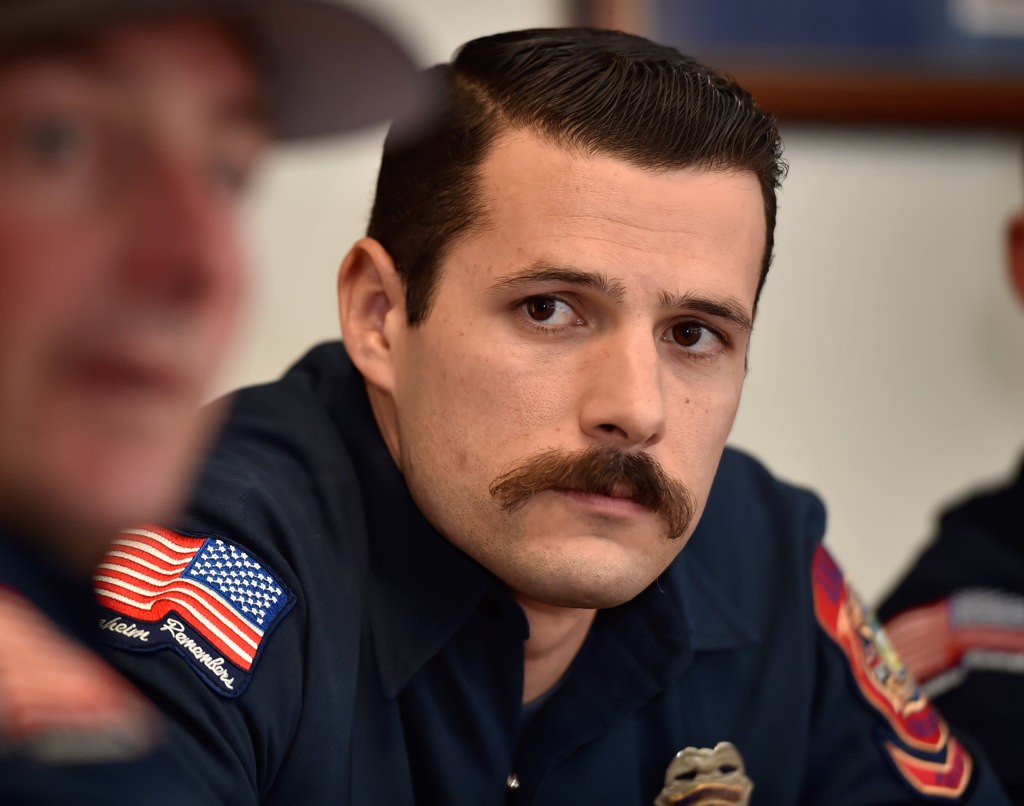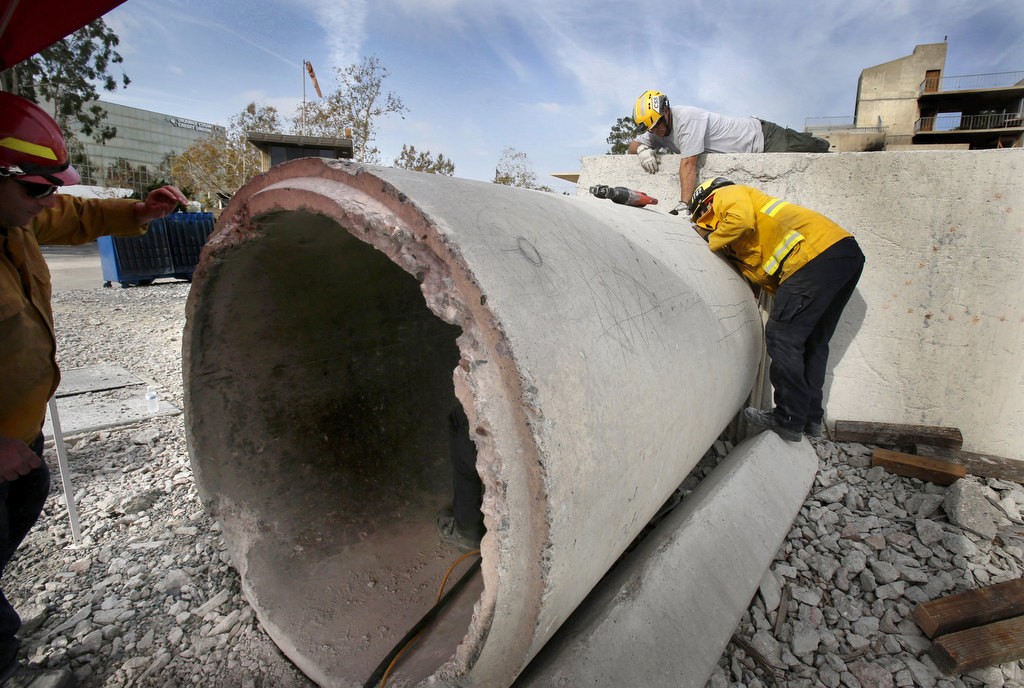Anaheim Fire & Rescue’s Urban Search and Rescue team members know they must train for every eventuality. But they also know there may be days when the inconceivable happens — and then they must adapt.
“It is highly technical rescue disciplines,” says Capt. Rick Cheatham, a member of the USAR team for about 15 years. “USAR just adds more tools in our toolbox, so to speak, which allows us to be more effective in a major incident.”
Made up of firefighters and firefighter paramedics specially trained in a broad range of rescue disciplines, including confined space (tunnels and underground), swift water and building collapse, to name a few, the team operates out of AF&R’s Station 2. Though all firefighters at the station are part of the USAR team, they are also working regular shifts. But if a USAR call comes in, they must be ready. Seven USAR members are generally assigned to duty daily (four is the minimum).

A Huntington Beach firefighter peers into a concrete pipe during an urban search and rescue exercise at Anaheim Fire’s North Net Training Center.
Photo by Christine Cotter
“It’s kind of a unique discipline in the fire service,” says Firefighter Brent Hirst, who has been on the team since its inception in 2001 (minus a two-year hiatus while he was with the training company).
For team members, it’s a rewarding, highly technical job with little room for error because lives are at stake — which is why there are so many hours of training.
“Most of the skill sets we’ve worked in, you don’t get a second try at,” says Hirst.
Training Never Ends
At a recent USAR regional certification training at AFR’s North Net Training Center, senior instructor Capt. David Baker emphasized the importance of training in the work they do.
“You’ve got to be at the top of your game,” he says. “It’s physically demanding. It’s mentally demanding.”
Because AF&R’s USAR team is also a part of FEMA’s California Task Force 5, the team participates in additional hours of training to meet FEMA’s requirements.
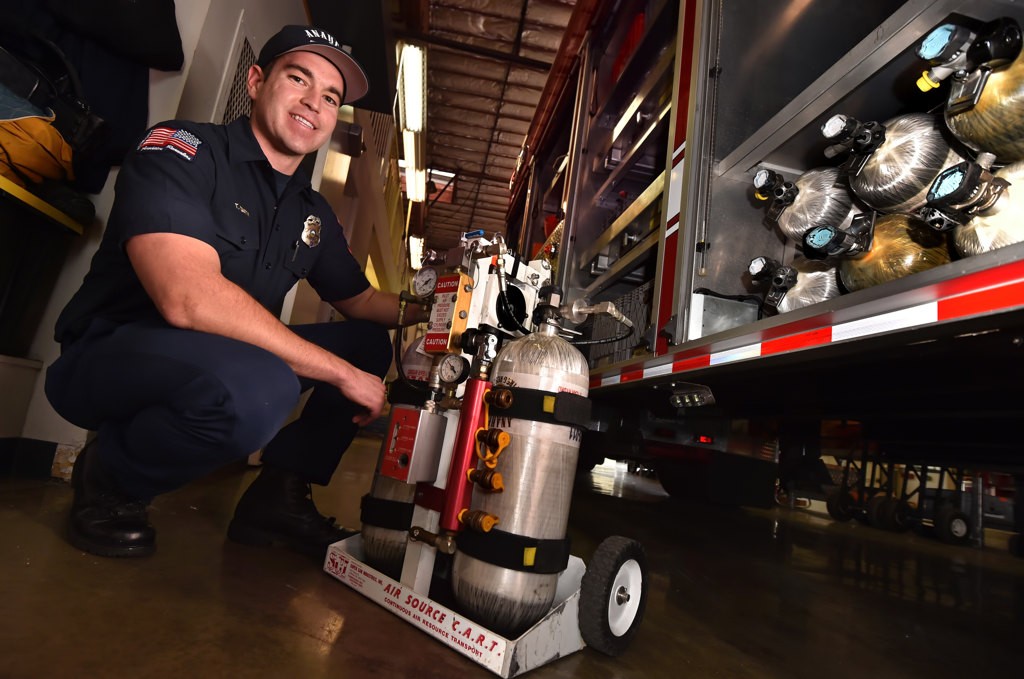
Anaheim Fire & Rescue Firefighter/Paramedic and Rescue Specialist Taylor Smith shows a Supplied Air Respirator used to supply external breathable air to firefighters in confined spaces too tight for them to wear tanks on their backs. The device is one of many kept on board AF&R’s US&R 2 (Urban Search & Rescue) truck.
Photo by Steven Georges/Behind the Badge OC
As part of the FEMA team, USAR members can be dispatched anywhere in the country for disaster-type events — in fact, Baker and other members were in New Orleans as part of Hurricane Katrina’s rescue efforts in 2005.
AF&R’s USAR team, for example, must undergo 24 hours of low-angle rope rescue, 40 hours of rescue systems 1, 40 hours of rescue systems 2, 24 hours of rescue systems 3, 40 hours of confined space and 24 hours of trench. And that’s just the basics. Plus, as procedures are updated, so is the training.
“It’s constant training, it’s constant updating,” Baker says.
At the North Net certification training, 31 firefighters from a wide range of departments (from Huntington Beach, Beverly Hills and Riverside County to Escondido and Sacramento) participated in a 40-hour rescue systems 2 class, including breaching through concrete slabs with drills, lifting and moving concrete, and using shores to prop up buildings.
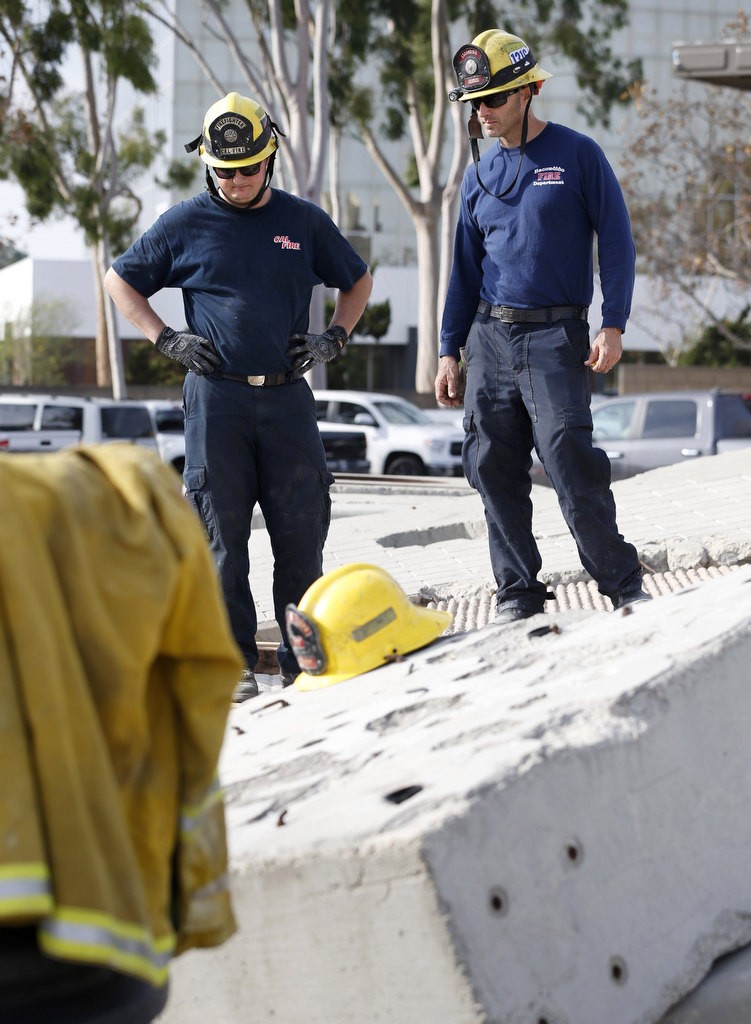
Escondido Firefighter/Paramedic Jeremy Frasca, right, and a Cal Fire firefighter take part in a a training exercise at Anaheim Fire & Rescue’s North Net Training Center.
Photo by Christine Cotter
“It’s very challenging,” says Baker. “They’re breaching through 8 inches thick of concrete… You’re dealing with thousands of pounds.”
Rescues In Action
The training is absolutely necessary for the work of the USAR team, but team members also have learned to expect the unexpected — meaning they also must be masters of improvisation.
“You simply can’t train for every potential,” says Hirst.

AF&R Engineer Nathan Patralia holds a dry suit used during swift water rescues where a rescue technician enters the water with a rope tied to the shore to rescue people from the rapid waters.
Photo by Steven Georges/Behind the Badge OC
So with the training as their base and specialized tools at their disposal, they troubleshoot each situation as it happens, implementing a plan and strategically carrying it out.
“We basically have a truck that is a rolling tool yard,” says Cheatham of their fully equipped rescue truck.
Their most recent rescue was of a maintenance worker who fell and slid down the Anaheim Convention Center dome to a side wall, where he was knocked out, bleeding and unconscious.
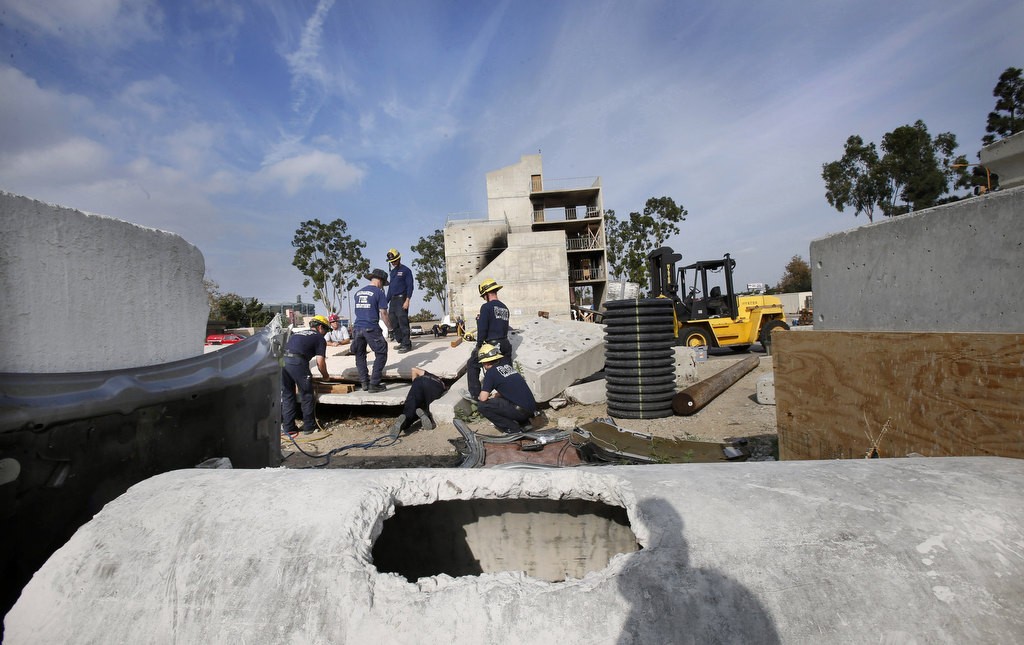
Firefighters search beneath concrete slabs in a training exercise at the North Net Training Center in Anaheim.
Photo by Christine Cotter
Then there was the rescue, about 1 1/2 years ago, involving the driver of a tractor trailer who went off the freeway and ended up driving into a carport area set beneath apartments, which were in danger of collapse from the accident. After the driver had been rescued by Garden Grove Fire, the USAR team worked to safely remove the tractor trailer by shoring the carport structure up because the tractor had hit supportive posts.
There also was the rescue of a man at the county landfill years ago who got pinned up against his truck and a concrete block retaining system. Normally, the team would have used airbags on the ground to help prop the victim free, but because the ground was landfill, it was too soft for the airbags. The only way to save the dying man was to perform a field amputation of his leg, so medical staff was called to the scene to perform the amputation— and he lived.
“Nothing’s ever the same, it’s always different,” says Cheatham.
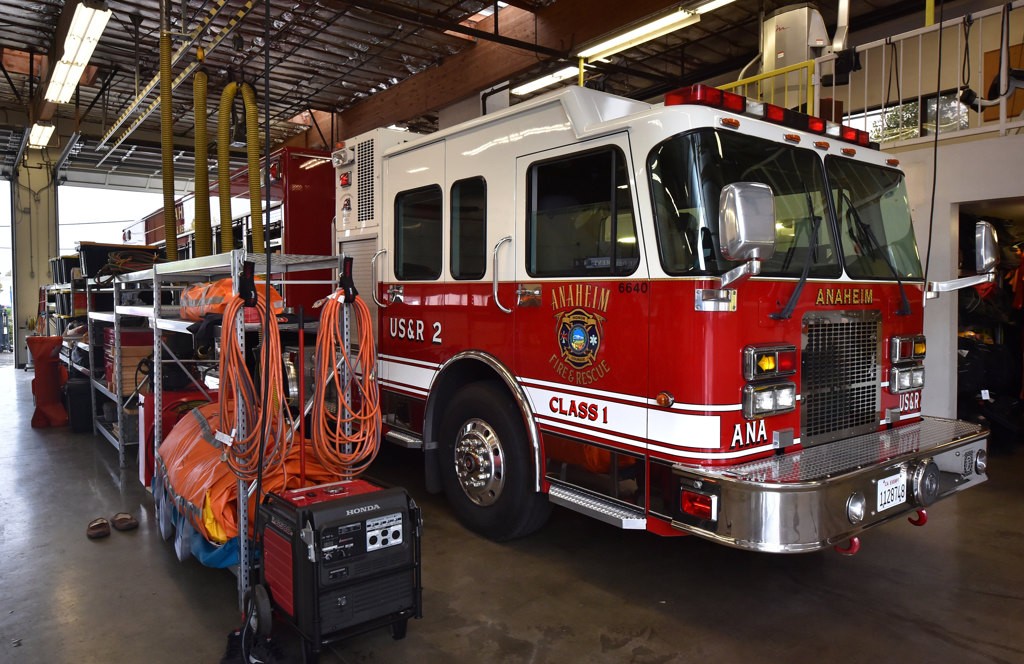
Anaheim Fire & Rescue’s US&R 2 (Urban Search & Rescue) truck at Fire Station No. 2, with a tool box of rescue equipment, weighs more than 70,000 pounds. The rescue vehicle is equipped to respond to calls in the city, county or statewide if necessary.
Photo by Steven Georges/Behind the Badge OC
Though the team can’t predict when they’ll be called out, they must be ready at a moment’s notice.
“We are a low-frequency, high-risk group,” says Firefighter Engineer Aaron Hamblin.
Firefighter Jason Hibbard, who has been on the team two years, says, “At any given moment, we can get called to a disaster like Katrina.”
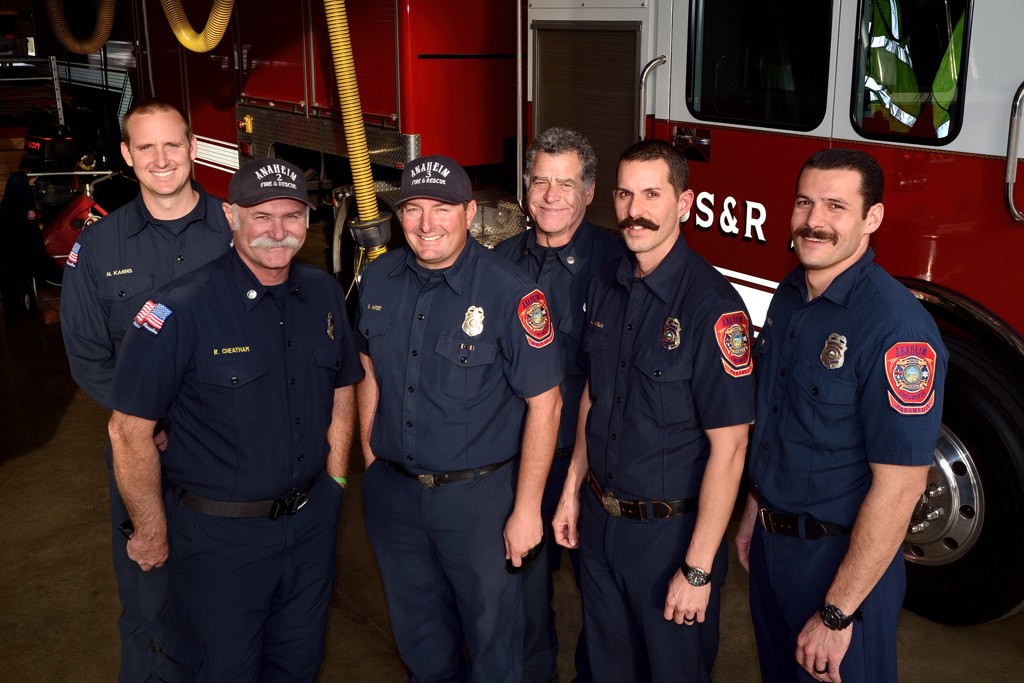
Anaheim Fire & Rescue’s Search & Rescue team at Anaheim Fire Station #2.
From left is Firefighter/Paramedic Nolan Karns, Capt. Rick Cheathan, Firefighter Brent Hirst, Capt. Albert Watson, Engineer/Paramedic Aaron Hamblin and Firefighter/Paramedic Jason Hibbard.
Photo by Steven Georges/Behind the Badge OC

A Riverside County firefighter uses a core drill to cut through a concrete wall during a training exercise at the North Net Training Center in Anaheim.
Photo by Christine Cotter
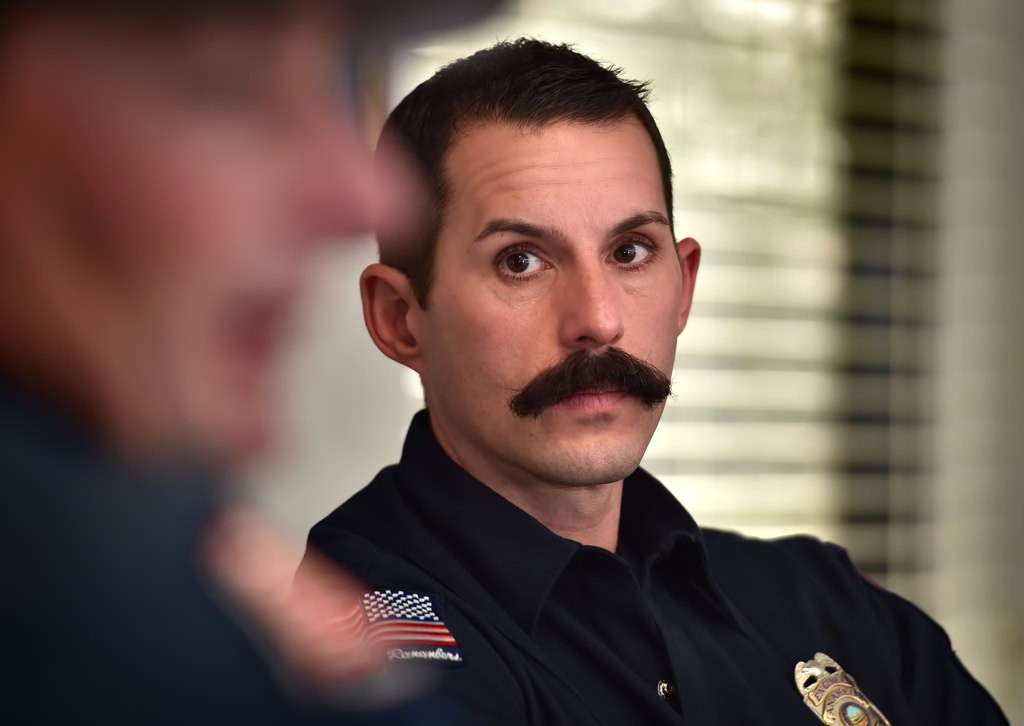
Engineer/Paramedic Aaron Hamblin of AF&R’s Search & Rescue team.
Photo by Steven Georges/Behind the Badge OC
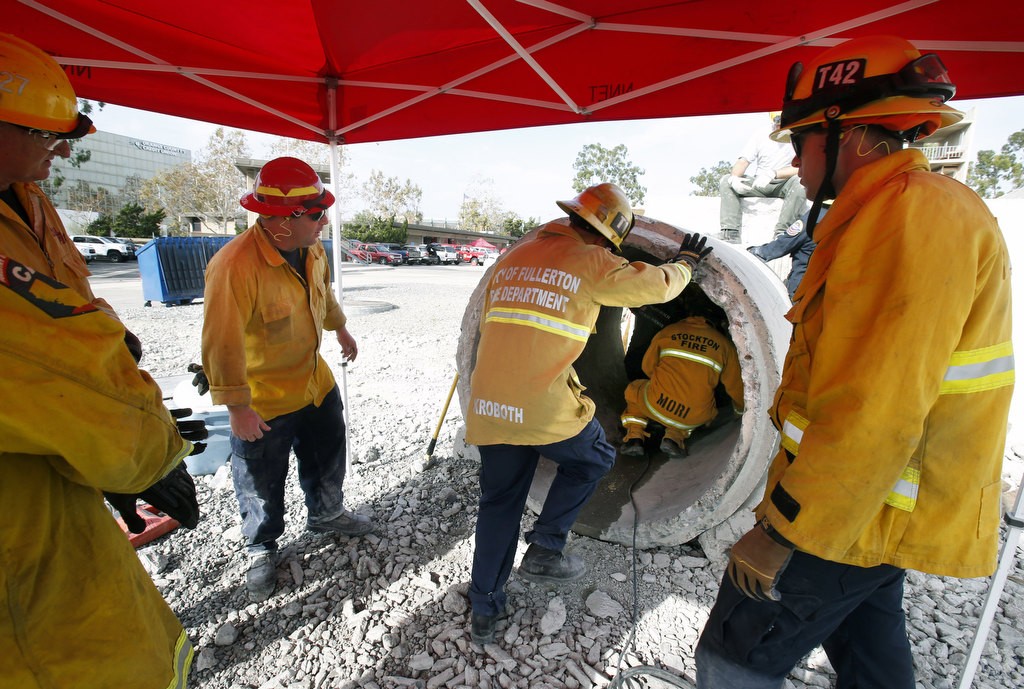
Firefighters participate in an urban search and rescue exercise at the North Net Training Center.
Photo by Christine Cotter
 Behind the Badge
Behind the Badge

